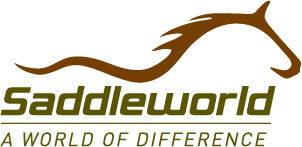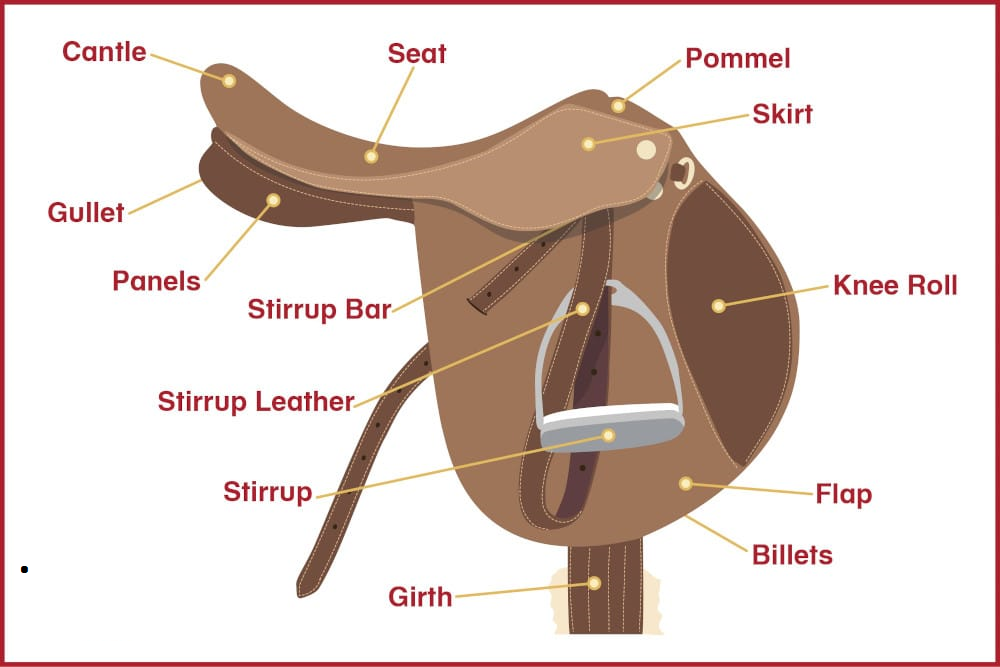
The Complete Guide to Horse Saddle Parts: Everything You Need to Know
Let’s take a closer look at horse saddles—be that the classic Western or ever-versatile English sort. If you’re keen to keep your horse comfortable, safe, and happy, understanding every part of your saddle is more than just useful—it’s essential. Pull up a chair, and let’s delve in together.
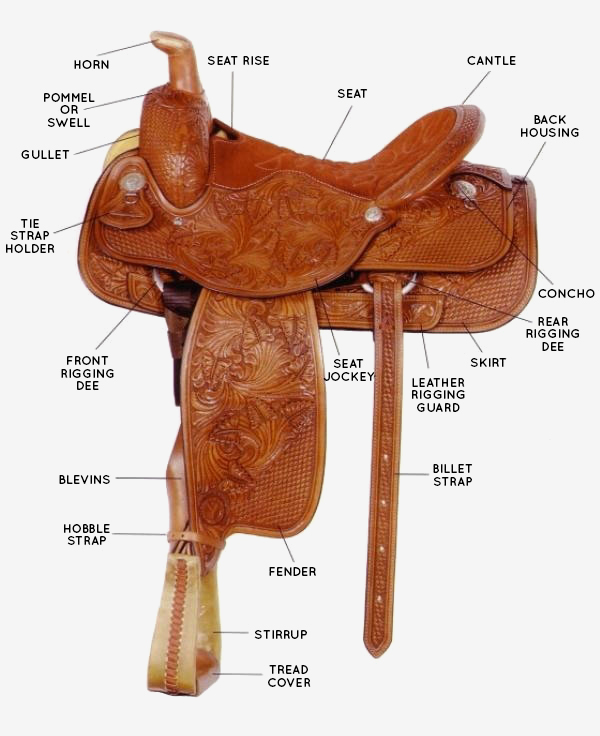
Why Bother Learning Saddle Parts?
Over my years in the saddle—from muddy English winters to dusty US ranches—I’ve learned that paying attention to your saddle’s anatomy can make all the difference. Whether you’re aiming for style points in a dressage arena or sticking fast during a lively hack through the countryside, the right fit and an eye for detail go a very long way.
This guide pulls together genuine equestrian experience and up-to-date advice. My goal? To help you understand not only what each part is called, but also why it matters—for you and your four-legged mate.
Main Types of Saddles & Their Anatomy—At a Glance
Western Saddle
- Sturdily built for long hours on the trail or at work with cattle
- Features a prominent saddle horn (brilliant for roping—not just for hanging up your coat!)
- Weighs more than an English saddle, often finished with intricate leather tooling
English Saddle
- Lighter and sleeker, giving a closer feel of the horse beneath you
- Not a horn in sight—perfect for jumping, eventing, or dressage
- Long, straight flaps encourage a lovely lengthened leg
You may also spot Australian stock saddles or other regional kits, each with their quirks. But in Britain and abroad, most riders refer to Western or English standards when naming saddle parts.
| Part Name | Western Saddle | English Saddle | Function |
|---|---|---|---|
| Tree | Wood/rawhide or synthetic, solid & heavy | Wood/laminate or synthetic, lighter | Forms the backbone of the saddle, evenly spreads rider’s weight |
| Horn | Bold & central, for roping | Not present | Your handhold in a scramble! (Western only) |
| Seat | Deep and broad | Can be deep or flat—varies by discipline | Where the magic happens (otherwise known as your perch!) |
| Stirrups | Weighty, attached via wide fenders | Lighter, with thinner leathers | Support, stability, and mounting ease |
| Skirt | Large, shields the horse’s back | Much smaller or sometimes absent | Spreads load and cushions impact |
| Girth (or Cinch) | Cinch, broad—often mohair or leather | Girth, typically leather or synthetic | Keeps saddle snug and stable |

The Western Saddle—A Closer Look at Every Part
Western saddles are known for their rugged, no-nonsense utility and decorative charm. Here’s what you’ll find on almost any Western model:
Key Framework
- Tree: The sturdy foundation, shaped in wood or synthetic materials, designed to last for decades.
- Horn: That classic knob at the front—brilliant for roping or steadying yourself.
- Seat: Generously deep and padded, which is a treat for those longer rides.
- Cantle: The raised back, supporting your lower spine—excellent over rough ground!
- Swell (Pommel): The curved front bit, keeping your hand and upper legs protected.
- Fenders: Wide leather pieces, guarding your legs from pinching and securing the stirrups.
Comfort & Safety Details
- Stirrups: Positioned for stability and ease of mounting.
- Skirts: Generous panels at the saddle base, shielding your horse from pressure points.
- Cinch: The wide strap running under your horse’s middle—vital for keeping things steady.
- Latigo Straps: Long, sturdy leathers that fasten your cinch.
- Rear Cinch: Adds extra security, especially helpful if you’re working cattle or riding on hilly ground.
Worth a Mention
- D-rings & Conchos: Handy bits for attaching bags or breastplates.
- Sheepskin Lining: Softens things for your horse, preventing rubbing.
- Jockeys: Leather protectors where your legs rest—keeps your ride smooth.
I’ll never forget my first Montana cattle drive—my Western saddle’s horn and deep seat saved me from a proper tumble more than once. There’s a reason the design’s stood the test of time.
The English Saddle—Control & Elegance in Every Detail
The English saddle puts you close to your horse, giving a real sense of their movement. You’ll see these on showjumping courses, in dressage, and on cross country courses. Each part is there to help you and your horse perform as a team.
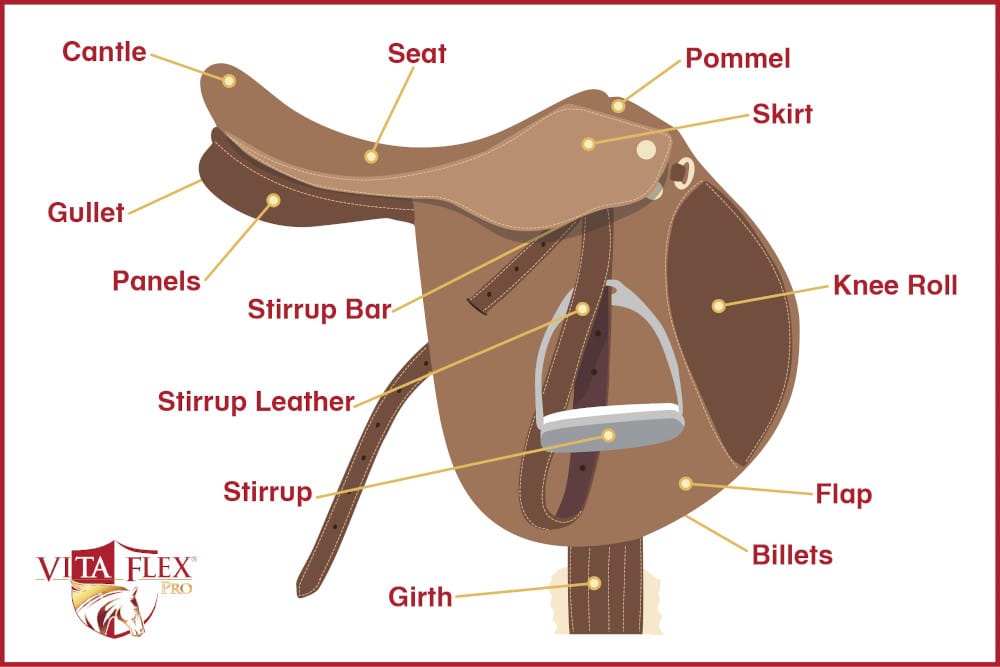
Image: Vita Flex
English Saddle Parts & Their Roles
- Pommel: The front arch—gives clearance for the horse’s withers.
- Cantle: Rises up at the back, giving security and support.
- Seat: Where you’ll spend most of your time; depth varies (deep for dressage, rather flatter for jumping).
- Panels: The padded underparts, spreading your weight over the horse’s back.
- Gullet: Central channel to keep pressure well away from the horse’s spine.
- Stirrup Bars: Attach the stirrup leathers; adjustable for your chosen riding style.
- Flaps: Leather pieces protecting your leg. Their shape varies a lot between jumping and dressage saddles.
- Knee Rolls: Provide extra grip: handy when your horse pulls out a sudden leap!
- Skirt: Small piece above stirrup bar, less prominent than on Western designs.
- Billet Straps: Strong leathers tucked under the flap, for fastening the girth securely.
Many modern English saddles offer thigh blocks for even more support, or a monoflap layout—ideal for advanced riders seeking ultimate feel.
The Fit That Matters
- Clearance: There should be space for 2–3 fingers above the withers.
- Panels must sit flat along the horse’s back—not rocking or bridging.
- Your seat should fit just right—neither squeezed nor swimming!
- The gullet mustn’t press on the spine, a key for comfort and long-term soundness.
Popular English Variants
- Jump Saddle: Forward-cut flaps & flatter seat—for when you’re flying fences.
- Dressage Saddle: Deep seat, long straight flap—helps you find that elegant line.
- All-Purpose: A bit of everything—ideal for hacking, fun rides, or if you fancy a bit of everything.
Safety, Care & What the Pros Always Check
Saddle Safety Essentials
- Fit is everything—for both horse and rider. Ill-fitting saddles are a recipe for sore backs and unhappy horses.
- Check regularly for splits in leather, broken trees, or loose stitching. Even a tiny issue can become a disaster mid-ride.
- Keep an eye on stirrup leathers—replace if they feel at all cracked or worn, especially if you ride daily.
- Don’t over-tighten your girth or cinch. If in doubt, err on the side of kindness and adjust as needed.
- Always, always consult a qualified saddle fitter for tricky fits or after any new behaviour pops up. It’s money well spent.
If you want more detail, check reputable sources like the British Horse Society or your local saddle fitting professional.
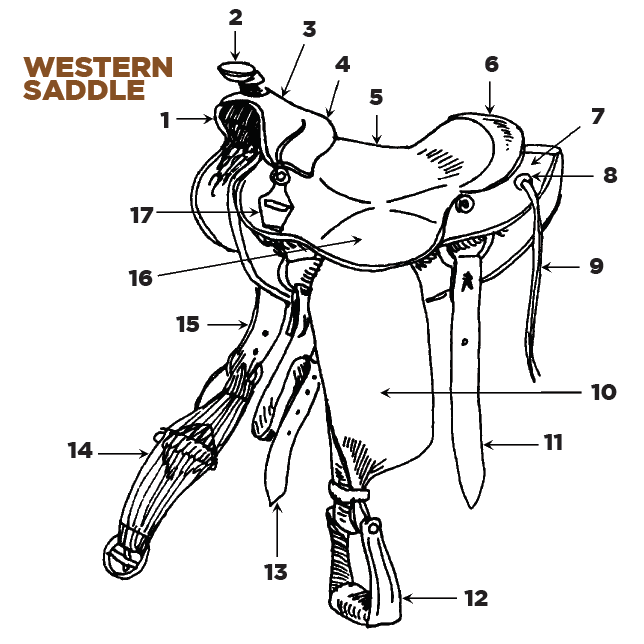
Image: Horse Illustrated
Frequently Asked Questions—Straight from the Stable
Which parts are truly essential on any saddle?
Both main types have a tree, seat, either skirt (Western) or panels (English), stirrups, girth/cinch, and the all-important straps for keeping everything in place.
How do I spot a saddle that fits (and one that doesn’t)?
A good saddle will clear the withers nicely, sit flat without tipping forwards or backwards, and leave your horse content after a ride. Patchy white hair, swelling, or grumpiness when being tacked up usually means the fit needs checking.
What’s the difference between a saddle horn and a pommel?
The saddle horn is unique to Western saddles—handy for ranch work. A pommel is the arched front found on both styles, giving hand support and wither clearance.
Is there a best material for saddle trees?
Many swear by traditional wood and rawhide, but modern synthetic trees are lighter and hard-wearing. Choose whichever suits your riding and climate—it’s the fit that matters most.
How much maintenance does a saddle really need?
Give it a wipe after every ride, condition the leather monthly, and check the stitching regularly. Don’t skimp on safety checks—small fixes now save big headaches later. An annual check by a saddler is a wise habit.
What exactly is a gullet, and why does it matter?
The gullet is a channel running underneath the saddle, protecting the horse’s spine by making sure the saddle doesn’t press where it mustn’t. Too narrow, and your horse will soon let you know they’re not comfortable!
Is there such a thing as a universal saddle?
No—there’s too much variation in horse shapes and rider needs. Always get professional advice for a new or challenging fit.
Saddles in Real Life—Lessons from Experience
There’s nothing like actual saddle time for learning what works. That old proverb—“the best piece of tack is a knowledgeable rider”—rings true! A well-chosen, well-fitted saddle is your most trusted ally, whether you’re bombing around a cross-country course, schooling in a quiet arena, or hacking out over open fields.
Every buckle and stitch has its place. The more you understand your saddle’s parts, the more confident and happy you—and your horse—will be together.
Want to Continue Learning?
For an even deeper dive, check out:
English Saddle vs Western Saddle: Comparison, History, and Fit Guide
—absolutely packed with useful know-how for riders of all levels.
In Summary—Knowledge is Your Best Tack
Whether you’re an eager novice or a seasoned old hand, taking time to learn about your horse’s saddle parts is always time well spent. Be curious, give your kit a regular once-over, and—above all—keep enjoying every minute in the saddle. Here’s to many more happy, safe rides!
